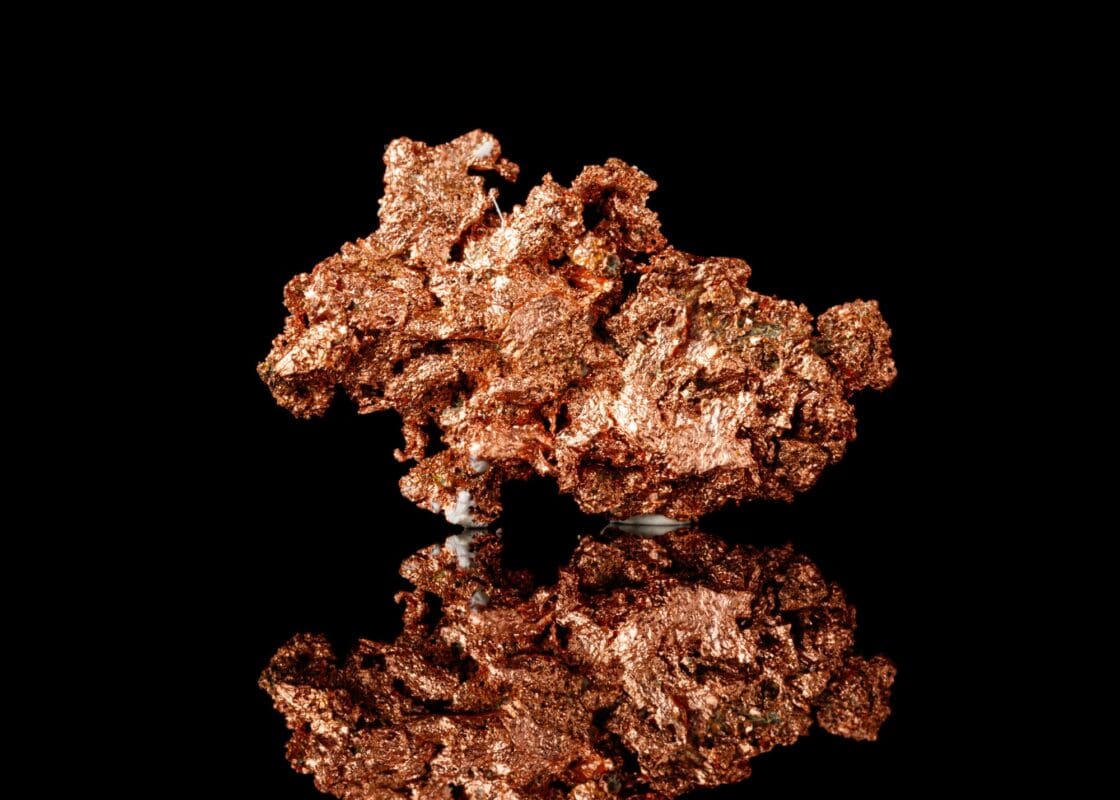Copper: The Essential Metal in Our Daily Lives and Collections
Introduction
Did you know that Copper was the first metal to be worked by humans and has been in use for over 10,000 years? Its discovery and utilization marked a significant leap in human civilization, leading to the Bronze Age. Today, Copper remains a vital component in numerous industries, from construction to electronics, thanks to its exceptional properties. In this article, we will explore the journey of Copper from its historical roots to its myriad uses in the modern world.
Historical Significance of Copper
The story of Copper is as old as civilization itself. It was among the first metals to be extracted and used by humans, signaling the end of the Stone Age. The malleability and ductility of Copper allowed early societies to create tools, weapons, and ornaments, spurring technological progress. The alloying of Copper with tin to create bronze gave rise to the Bronze Age, a pivotal era in human history, characterized by advancements in metalworking and societal development.
Geological Formation and Properties of Copper
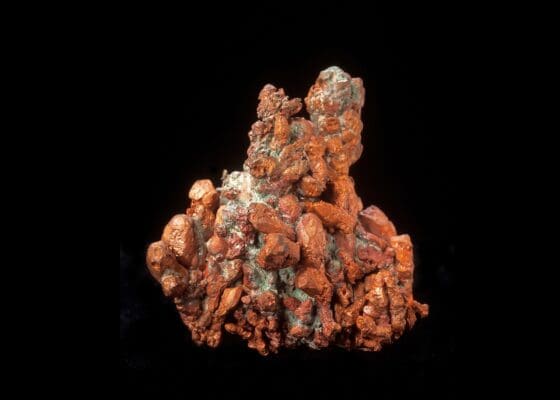
Copper is typically formed in porphyry copper deposits, often associated with volcanic activity. These deposits are formed when hot, mineral-rich fluids rise from deep within the earth’s crust, cooling and depositing various minerals, including Copper. One of Copper’s most distinctive features is its reddish-brown color, a characteristic that sets it apart from other metals. It is also highly malleable and conductive, making it invaluable in a wide range of applications.
Copper in Daily Life and Industry
Copper’s Role in Everyday Objects and Industrial Applications: Copper is a fundamental element in modern life, known for its excellent electrical and thermal conductivity. It’s a key component in electrical wiring, plumbing, and telecommunications due to its reliability and efficiency. In the home, Copper is found in various appliances, including refrigerators, air conditioners, and washing machines. Its antimicrobial properties also make it a preferred material for surfaces in healthcare and public spaces.
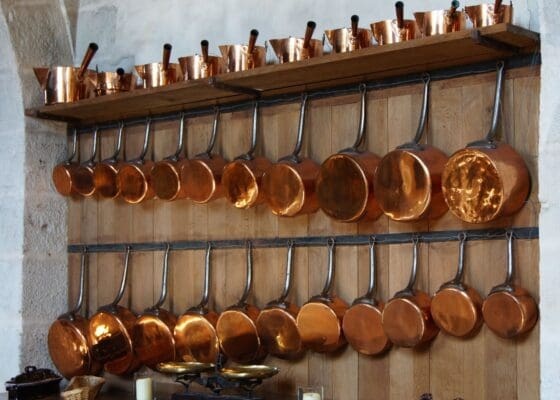
Examples of Household Items and Infrastructure: Copper is ubiquitous in household items such as cookware, and decorative pieces, and in the infrastructure of buildings for water pipes and roofing materials. In the automotive industry, Copper is essential for vehicle radiators, brakes, and bearings. The renewable energy sector also heavily relies on Copper for wind turbines, solar panels, and electric vehicles.
Collecting Copper
Value of Copper in the Collector’s Market: Copper’s historical and aesthetic appeal makes it a sought-after item among collectors. Antique Copper coins, vintage cookware, and artistic sculptures are just a few examples of collectible Copper items. The metal’s patina, which develops over time, adds character and value to these artifacts.
Tips for Identifying and Collecting Unique Copper Artifacts: When collecting Copper, look for authenticity, age, and craftsmanship. Antique Copper items often have a distinctive greenish-blue patina, known as verdigris, which can indicate age but should be evaluated carefully to distinguish natural aging from artificial treatments. Collectors should also familiarize themselves with hallmarks and maker’s marks that can authenticate and date Copper pieces.
Market Value and Scrap Copper
Analysis of the Current Market Value of Copper: The market value of Copper fluctuates based on global demand, mining outputs, and economic trends. As an essential industrial metal, its price is a barometer of economic health, often rising with industrial growth and falling during economic slowdowns.
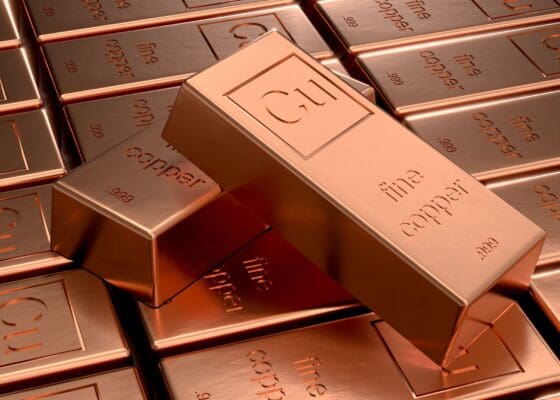
Insights into Scrap Copper: Scrap Copper holds significant economic value and is a key component of the metal recycling industry. The most valuable types of scrap Copper include clean, uncontaminated copper pipes and wiring. To maximize profit from scrap Copper, it’s important to separate it into grades based on purity and to keep it clean and free from insulation and other materials.
Finding and Identifying Copper
Locating Copper in Nature and Urban Environments: Copper can be found in various geological settings, often in areas with volcanic activity and sedimentary basins. In nature, it is typically extracted from copper ores, such as chalcopyrite, malachite, and azurite. In urban environments, Copper is frequently recycled from electrical wiring, plumbing pipes, and old electronics. Urban mining, the process of reclaiming raw materials from spent products, buildings, and waste, is a growing source of Copper.
Tips on Identifying Copper: Copper is distinguishable by its reddish-brown color and its characteristic green patina, which forms when it oxidizes. It’s a soft, malleable metal and has high thermal and electrical conductivity. When identifying Copper, one should also look for its density and the warm, metallic luster it exhibits when freshly cut or polished. To distinguish Copper from other metals, it’s useful to perform a streak test, as Copper leaves a reddish streak on unglazed porcelain.
Copper and Its Environmental Impact
Environmental Aspects of Copper Mining and Recycling: Copper mining can have significant environmental impacts, including habitat destruction and pollution from mining processes. However, Copper is highly recyclable, which lessens its environmental footprint. Recycling Copper requires less energy than primary production and helps reduce CO2 emissions and the depletion of ore reserves.
Copper’s Role in Sustainable Development and Green Technologies: Copper plays a crucial role in sustainable development and the advancement of green technologies. Its use in renewable energy systems, such as solar panels and wind turbines, and in energy-efficient vehicles, underscores its importance in the transition to a more sustainable future. Copper’s recyclability also contributes to sustainable practices in various industries.
Copper in Art and Culture
Copper in Artistic Expressions and Cultural Artifacts: Copper has been used in art and cultural artifacts for millennia, valued for its malleability and beautiful patina. In art, it has been used for sculptures, jewelry, and decorative items. Copper’s unique color and texture make it a favorite among artists and craftsmen.
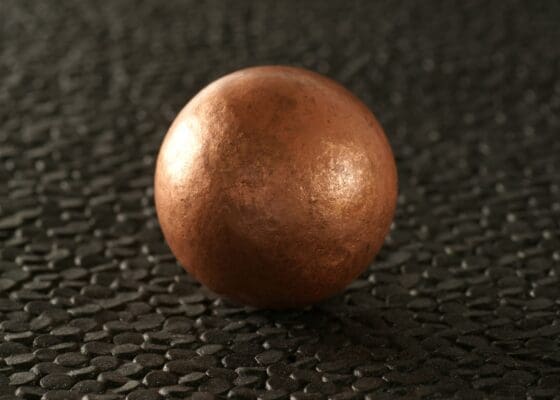
Examples of Copper in Art, Architecture, and Decorative Items: Notable examples include the Statue of Liberty, which is clad in over 80 tons of Copper, and the Copper roofs of many historical buildings, which are admired for their beauty and longevity. In decorative arts, Copper is used in intricate designs on vases, bowls, and wall hangings, showcasing the metal’s versatility and aesthetic appeal.
Fun Facts and Trivia about Copper
- Ancient Currency: Copper was one of the first metals used to make coins, and its use as currency dates back to ancient Rome.
- Natural Antimicrobial: Copper surfaces naturally kill bacteria and viruses, making it an important material in healthcare settings.
- Artistic Medium: The famous Renaissance artist Leonardo da Vinci created masterpieces using Copper as a canvas.
- In Space: Copper is used in spacecraft because it can withstand extreme temperatures and conducts both heat and electricity efficiently.
- Color Change: When Copper oxidizes, it develops a green patina, as seen on the Statue of Liberty, which is made of Copper.

Answers to Top Questions from Google’s ‘People Also Ask’
- What is Copper used for?
Copper’s wide range of applications stems from its excellent electrical conductivity and high thermal resistance, making it indispensable in electrical wiring and electronic devices. In plumbing and construction, its durability and malleability are highly valued. Copper’s aesthetic appeal and antimicrobial properties make it popular in jewelry, cookware, and decorative pieces. Additionally, its use in coins dates back centuries, reflecting its enduring value and utility. - What metal is Copper made of?
Copper is a pure elemental metal, represented by the symbol Cu and atomic number 29 on the periodic table. It is not an alloy or a combination of different metals but exists naturally in a directly usable metallic form. Copper’s elemental nature contributes to its distinct properties, such as high conductivity and resistance to corrosion. - What is the color of Copper?
Copper exhibits a characteristic reddish-brown hue when polished, making it easily recognizable. This unique color results from its elemental composition and crystal structure. Over time, exposure to oxygen and moisture in the air leads to the formation of a greenish-blue patina on its surface, known as verdigris, which is often sought after for its aesthetic and protective qualities. - Examples of Copper items.
In everyday life, Copper is present in numerous items, including electrical wiring and plumbing pipes, which leverage its conductivity and malleability. In the kitchen, Copper is found in high-quality cookware, renowned for even heat distribution. It’s also used in decorative arts, with Copper sculptures and ornaments being quite popular. In electronics, its use is critical in circuit boards, computer chips, and motor coils. - Household items with the most Copper.
Copper is predominantly found in household plumbing systems and electrical wiring due to its durability and conductivity. Many home appliances, like refrigerators and air conditioners, also contain Copper in their motors and internal components. Additionally, Copper fittings and decorative items are common in many homes, reflecting its functionality and aesthetic appeal. - Everyday things that contain Copper.
Everyday items containing Copper include electrical cords and cables, vehicle radiators, and some cookware. Doorknobs and other fixtures often utilize Copper for its antimicrobial properties, which inhibit the growth of bacteria and viruses. - Finding large amounts of Copper.
Large quantities of Copper can be sourced from industrial sites, construction debris, or renovation sites, especially where old plumbing and electrical components are being replaced. Salvaging Copper from discarded electronics and appliances is also a common way to accumulate significant amounts. - Value of a pound of Copper.
The monetary value of a pound of Copper fluctuates based on global market trends, influenced by supply, demand, and economic factors. Copper’s widespread use in various industries ensures its value remains significant, making it a lucrative material in recycling and trade. - Maximizing profit from scrap Copper.
To maximize returns from scrap Copper, it is essential to sort and separate it by grade and quality. Removing any attached materials such as insulation increases its purity and, consequently, its value. Selling scrap Copper when market prices are high can significantly increase profits. - Finding Copper underground.
Copper mining typically involves open-pit or underground mining techniques. It is often found in ore deposits alongside other valuable metals like gold and silver. Prospectors look for signs of Copper ore in rock formations and use geological surveys to locate potential mining sites.
Copper Quiz for Collectors and Enthusiasts
Test Your Knowledge of Copper!
- What ancient civilization first used Copper as a form of currency?
A) Greeks
B) Romans
C) Egyptians - Copper is a natural __________, making it valuable in healthcare.
A) Conductor
B) Antimicrobial
C) Insulator - What is the atomic number of Copper on the periodic table?
A) 29
B) 17
C) 34 - Which famous artist used Copper as a canvas for their paintings?
A) Michelangelo
B) Leonardo da Vinci
C) Vincent van Gogh - In metaphysical beliefs, Copper is thought to enhance __________.
A) Physical strength
B) Emotional healing
C) Communication and energy flow
Challenge your knowledge with this quiz on Copper! Discover fascinating aspects of this essential metal, from its historical uses to its role in art and metaphysical properties. Share your score and insights in the comments to continue the exploration of Copper’s intriguing world!
Where in the United States can you find copper?
Copper is widely distributed across the United States, with several states being renowned for their significant Copper deposits and historical mining operations. Here’s an overview of key locations:
- Arizona: Often referred to as the “Copper State,” Arizona has been the leading Copper-producing state in the U.S. for over a century. Major mines include the Morenci Mine in Greenlee County, the largest Copper mine in North America, and the historic Bisbee and Jerome districts.
- Utah: The Bingham Canyon Mine, also known as the Kennecott Copper Mine, near Salt Lake City, is one of the largest open-pit mines in the world and has been a significant Copper producer for over 100 years.
- Montana: The state was once home to the Anaconda Copper Mine, one of the largest Copper mines globally. Butte, Montana, also known as “The Richest Hill on Earth,” has extensive Copper mining history.
- Michigan: The Upper Peninsula of Michigan, particularly the Keweenaw Peninsula, has a rich history of Copper mining. Native Copper deposits here are some of the largest and most pure ever discovered.
- New Mexico: The Chino Mine, or Santa Rita mine, near Silver City, is one of the oldest mining sites in North America, where Copper has been mined for thousands of years.
- Nevada: The state has several Copper mines, including the Robinson Mine near Ely, which produces Copper along with gold and silver.
- Alaska: The state has several large Copper deposits, although many are not as extensively mined as those in other states. The Pebble Mine in southwestern Alaska is a significant but controversial undeveloped Copper deposit.
Each of these locations has contributed significantly to the United States Copper production and offers a glimpse into the rich mining history and geology of the region. Active mines are predominantly large-scale operations, while historical sites often offer tours and educational opportunities to learn about the history and impact of Copper mining in the region.
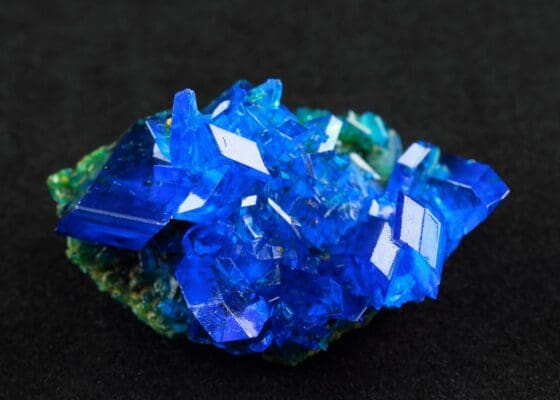
Conclusion
As we wrap up our exploration of Copper, it’s clear that this metal holds a special place in both the history and the future of human civilization. Copper’s versatility and unique properties have made it an indispensable material in numerous industries, from electronics and construction to renewable energy. Its reddish-brown luster and historical significance also make it a cherished item among collectors and history enthusiasts.
Copper’s journey from ancient times, where it helped herald the dawn of human civilization, to its crucial role in modern technology, illustrates its enduring value. The metal’s ability to conduct electricity and resist corrosion has cemented its place in the modern world, while its antimicrobial properties are increasingly relevant in today’s health-conscious society.
For those intrigued by the multifaceted nature of Copper and interested in exploring its applications or starting a collection, numerous resources are available. Whether you’re a history buff, a technology enthusiast, or a collector, Copper offers a rich field of study and collection. Explore museums, and online resources, or join collector communities to deepen your understanding and appreciation of this essential metal.
Related Metals and Minerals
Exploring the world of Copper and its related minerals offers a fascinating journey through some of the most vibrant and historically significant materials used by humans. Here are some suggestions for articles, products, and further exploration related to Copper and its associated minerals:
- Azurite: Known for its deep blue color, Azurite is a Copper carbonate mineral often found in association with Malachite. Articles could explore its use in pigments throughout history, its formation and occurrence, and its role as a gemstone in jewelry.
- Chrysocolla: This attractive blue-green mineral, also a Copper silicate, has been used as a gemstone and ornamental stone. Its unique color palette, properties, and occurrences, especially about Copper mining, can provide interesting topics for articles.
- Dioptase: Although not a Copper ore, Dioptase’s intense emerald-green color is due to its Copper content. It is a popular mineral among collectors. Articles can delve into its crystal structure, rarity, and the striking visual contrast it creates with Copper minerals.
- Malachite: This green Copper carbonate is often found alongside Azurite. It is prized for its intricate, banded patterns and has been used in jewelry and ornamentation for thousands of years. Articles can focus on its historical significance, geological formation, and the beautiful objects crafted from it.
- Bornite: Also known as peacock ore, Bornite is a Copper iron sulfide mineral known for its iridescent tarnish. It can be an exciting subject for articles, focusing on its unique aesthetic properties, formation, and usage.
- Cuprite: This Copper oxide mineral is known for its red to brownish-red color. Articles about Cuprite can cover its crystallography, the extraction of Copper from Cuprite, and its occurrences alongside other Copper minerals.
- Turquoise: Although not a Copper ore, Turquoise is a phosphate mineral that owes its blue-green color to Copper. It has been used as a gemstone and ornamental stone for millennia. Exploring its cultural significance, formation, and the unique characteristics of Turquoise from different localities would be intriguing.
References and Further Reading
For more comprehensive information on Copper, consider these credible sources:
- The Copper Development Association (CDA): Offers extensive resources on Copper’s properties, applications, and industry news.
- Mineralogical Society of America: Provides in-depth scientific information on Copper and related minerals.

